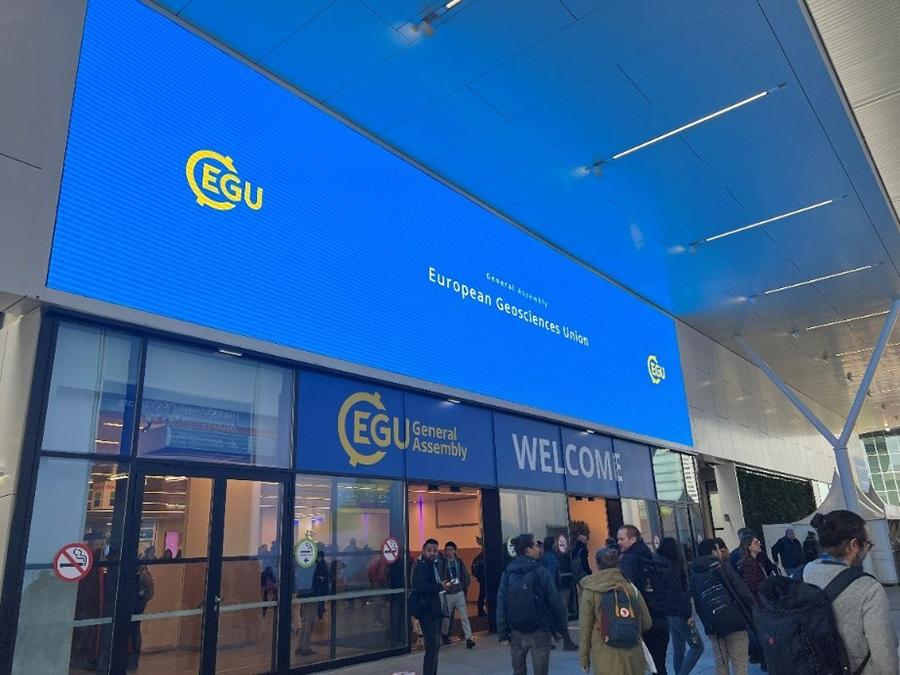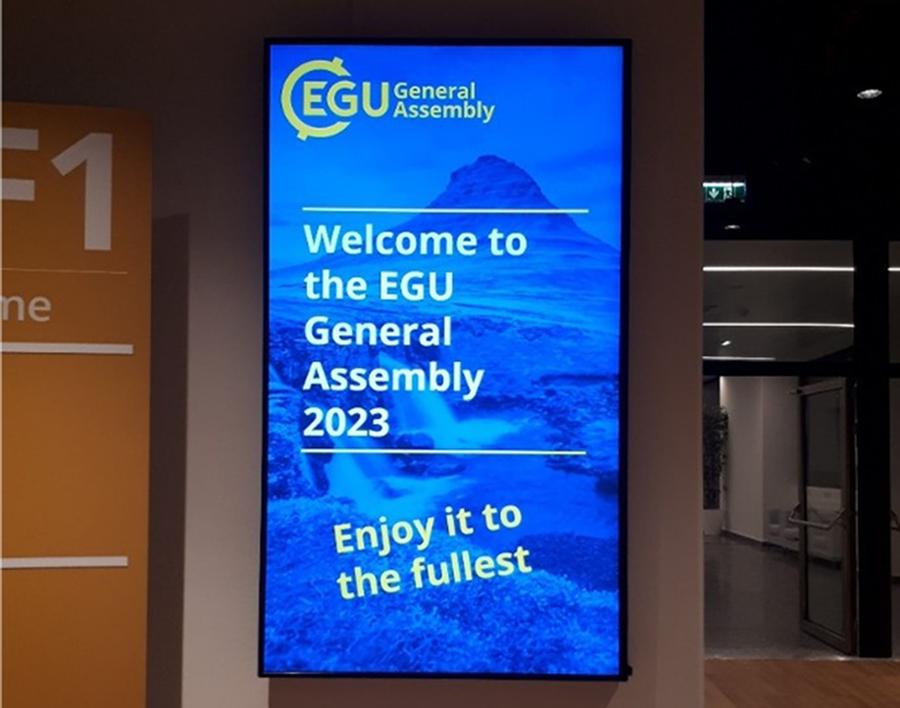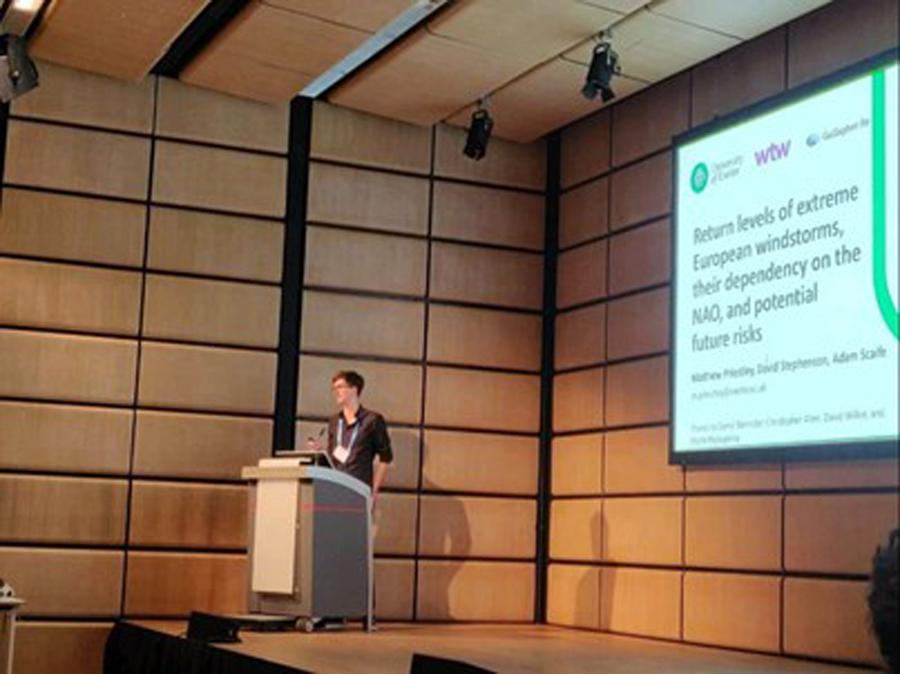Staying informed about the latest science research and innovations is essential to stay ahead.
That's where the European Geosciences Union (EGU) conference comes in. As Europe's largest geosciences event, held annually at the Austria Center Vienna, it offers a flagship platform for sharing the latest research, scientific discoveries, and innovations in geosciences. The conference covers a diverse range of topics, including earth, planetary, climate change, natural hazards, and space sciences, through talks, posters, workshops, and panel discussions. The April 2023 event attracted 18,831 attendees from 107 countries around the world, offering 16,357 presentations across hundreds of parallel sessions[1]. The wealth of information provides valuable insights for the insurance industry, leading to the development of innovative solutions and contributing to a more resilience and sustainable future for all.

With climate change being a major driver of increased weather-related losses, sessions on climate change and the effects of climate change on extreme weather events, such as heatwaves, and their attribution[2], and the need for responses to climate change such as adaptation and mitigation[3], are especially relevant for the industry.
For instance, the development of a novel methodology to characterise streamflow regimes in the context of total annual streamflow for water supply showcases the need to accurately monitor and predict changes in water supply[4]. Furthermore, the findings on the increasing frequency of compound dry-hot events emphasized the potential for a higher number of such events in the future due to changes in rainfall, temperature, and soil moisture-temperature coupling[5]. Not only is this information critical for policy-makers and communities to prepare for mitigating the impacts of future extreme weather events, but it also enables insurers to better evaluate risks and potential losses associated with extreme weather events.
Wildfire (monitoring, modelling, forecasting, and impact assessment) also emerged as a prominent topic. Researchers from the University of Adelaide presented a wildfire connectivity index that captures the structural patterns of wildfire likelihood, influenced by the interaction of fire behaviour across multiple scales[6]. Such an index can support wildfire risk assessments and is especially relevant for the insurance industry to assess associated risks and losses and plan for risk reduction activities.
The interconnected nature of risks was highlighted, as droughts can lead to forest fires, while heavy rainfall on dry soil can trigger floods or landslides, all further worsening existing food and water shortages or the outbreak of diseases. Recognizing interdependencies is essential for mitigating disasters, as the well-being of nature, humanity and the economy are interconnected in today’s world. Discussions emphasised the crucial importance of understanding natural hazard risks in a holistic manner and called for the development of tools, methods, frameworks and guidelines to effectively tackle co-occurring and cascading risks[7].
The MYRIAD-EU project[8] aims to address these issues through the creation of a 10k year stochastic event set for multi-hazard modelling, with the talk highlighting challenges presented by coupling of events, secondary hazards, and dependant scenarios. Developments such as these aim to enhance preparedness and response capabilities for both individual communities and the insurance industry.

Topics such as community resilience, decision-making in response to climate change, and timely access to environmental data are crucial for insures to assess risks accurately and develop appropriate responses. Presentations shed light on the importance of timely access to environmental data for community resilience and the challenges communities face in using scientific data[9],[10]. This also underscores the need for new approaches to produce and integrate data, and the implications of data for policies supporting responses to climate change.
One specific area of interest discussed was the role of insurance in promoting nature-based solutions for wildfire risk management.[3] The paradigm shift towards a fire loss-prevention strategy through nature-based solutions, such as fire-resistant vegetation prioritization, controlled burns, and risk-adapted development, has gained consensus as an effective approach. The question arises as to whether risk financing strategies, particularly insurance, can facilitate the adoption of nature-based solutions by providing protection against damages from prescribed burns or livestock grazing, offering discounts for implementing ecological fire-prevention measures, or even repairing ecological damage through (parametric) policies. These discussions explored the opportunities and constraints for insurers to support nature-based solutions for wildfire risk management, drawing on ongoing research in Horizon Europe projects such as FireLogue, The HuT, and NATURANCE.
Another key topic for the insurance and risk management industry is the use of remote sensing and Earth observation to understand climate change, predict natural hazards, and manage risks[11]. Many presentations highlighted the expanding roles of remote Earth observation, big data, AI, and machine learning including volcanic early warning systems[12], earthquake and tsunami modelling[13], and automatic detection of landslides[14]. These new machine learning algorithms and other advanced data analytics techniques can help insurers more accurately assess risk, set premiums, and manage claims. With so much surface area to cover in a constantly changing physical landscape, the use of high-performance computing and automation to process satellite images and historical data for risk assessment and forecasting is also now a necessity. One of the most exciting aspects of these technologies, from a research perspective, is their constant evolution and improvement. It is clear that to stay ahead of the evolving risks, the insurance and risk management industry must embrace technological advancements and interdisciplinary collaboration. The opportunities for collaboration are numerous, and the WTW Research Network, in its unique position bridging the gap between academia and industry, is ideally placed to highlight where limitations and uncertainties exist and help to address them.
Talks of particular interest include the Corpora for Volcanoes project; development of an AI tool to assess and query digitised historical documents detailing types of eruption at particular volcanoes, in order to forecast potential future eruption types and risk assessment for resilience planning[15]. There was also an emphasis on assessment of tsunamigenic events, with talks discussing the creation of a collaborative Euro-Mediterranean submarine landslide database containing historical and geomorphological information for quantitative assessment of landslide-derived tsunamis[16], and how stochastic earthquake slip models can affect uncertainty for tsunami forecasting[17].
These research topics and the insurance and risk broking industry intersect where there is a need to harness large quantities of data; both historical catalogues as well as up-to-date monitoring and remote Earth observation, processing these for relevant information, and incorporating them into models that can quickly and accurately assess the risk and exposure to clients. Insights shared by industry professionals emphasised that certain datasets and models, commonly regarded as “standard” within insurance and reinsurance fields, may not incorporate the most recent advancements in scientific research. The WTW Research Network endeavours to tackle these concerns through our focus on model evaluation, thereby addressing the need for ongoing improvement and innovation in this domain.
These research topics and the insurance and risk broking industry intersect where there is a need to harness large quantities of data;...

…to stay ahead of the evolving risks, the insurance and risk management industry must embrace technological advancements and interdisciplinary collaboration.
Effective collaboration and communication are key enablers for addressing the challenges posed by climate change and natural hazards. The importance of effective ways to engage broader audiences and communicate complex scientific concepts in accessible and compelling ways, including the breaking of knowledge and data silos, to improve climate equity was an emphasis throughout. The conference highlighted the significance of interdisciplinary research and collaboration between academia, industry, policymakers, and communities.
Interdisciplinary research, such as the CLICCS Plausibility Assessment Framework[18], which evaluates the feasibility of deep decarbonization by 2050 and staying within the 1.5°C global warming limit, plays a key role in facilitating effective communication and decision-making by bringing together over 60 scientists from various social and physical sciences. Despite the unique focus of the CLICCS framework and in facilitating collaboration and communication, the unfortunate conclusion drawn is that the current circumstances render deep decarbonization and meeting Paris-aligned goals implausible. To increase plausibility, it is crucial to continue to address knowledge gaps, garner societal support for sustainability transformations, and establish frameworks for sustainable consumption and production.
…the insurance sector has a unique role in incentivizing and supporting investments for climate and environmental risk mitigation,...
Furthermore, panel discussions on effective communication[19], stressed the importance of engaging broader audience beyond climate science and fostering intergenerational equity. However, the absence of insurance industry experts in discussions and panel sessions highlight the need for greater engagement from the industry. As the insurance sector has a unique role in incentivizing and supporting investments for climate and environmental risk mitigation, active participation from industry representatives can contribute valuable insights and drive informed decision-making and policy development.
Effective collaboration and communication are key enablers for addressing the challenges posed by climate change and natural hazards.
The WTW Research Network’s partnerships with academic institutions showcase collaborative efforts in this field. WTW Research Network Fellow Dr. Matthew Priestley from the University of Exeter, who, guided by Professors David Stephenson and Adam Scaife, presented a new method to estimate wind gusts across Europe up to the 200-year return period with a resolution of 4.4km[20]. This new approach could be useful for industries and government agencies that do not traditionally use catastrophe models,to better understand and manage windstorm risks. Leanne Archer from the University of Bristol discussed her PhD research on improving the understanding of current and future flood risk in Puerto Rico using high-resolution flood hazard and population exposure estimates[21], while Tudor Suciu from the University of Cambridge presented an AI-driven approach to understand future coastal flooding in the United Kingdom[22]. Both projects aim to provide policy-makers, businesses, governments, and individuals with actionable information to better plan for future flood events. In addition, a poster advertising the TREAD (daTa and pRocesses in sEismic hAzarD) project, which is a Marie Skłodowska-Curie Actions Horizon Europe Doctoral Training Network in which WTW is a key industry partner, was also displayed[23].

First, the four themes emphasized here – understanding the impacts of natural hazards, building resilience, harnessing technology, and fostering collaboration and communication – and the priorities therein – not only serve as fundamental building blocks to address climate change and growing vulnerability to natural hazards, but they also guide research efforts within academia and industry, together, to bridge the knowledge-action gap. They highlight the key areas of focus for addressing climate change and the increasing vulnerability to natural hazards.
Embracing emerging technologies and scientific advancements can lead to improved risk assessment, forecasting, and claim management.
Second, to navigate the challenges ahead, it is crucial for the industry to take proactive steps. Embracing emerging technologies and scientific advancements can lead to improved risk assessment, forecasting, and claim management. By investing in data analytics tools, developing new underwriting models and risk management strategies, and re-evaluating existing practices, insurers can more accurately predict the costs associated with natural hazards and better serve their clients.
Both projects aim to provide policy-makers, businesses, governments, and individuals with actionable information to better plan for future flood events.
However, and last, the path to resilience requires collaboration and interdisciplinary efforts. Insurers should actively engage in discussions, policy development, and partnerships with academic institutions and stakeholders. By advocating for enhanced data accessibility and contributing to the development of tools and methodologies that encompass all dimensions of risk, including hazard, vulnerability, and exposure, the insurance industry can play a pivotal role in driving comprehensive risk management solutions.
The WTW Research Network stands at the forefront of this mission, working closely with researchers, policymakers, and stakeholders to manage and mitigate risks associated with natural hazards and climate change. By staying informed, incorporating accurate information into risk assessment, embracing technological advancements, fostering interdisciplinary collaboration, and actively engaging in discussions and policy development, the insurance and risk broking industry can continue to contribute to a more resilient and sustainable future for all.
Insurers should actively engage in discussions, policy development, and partnerships with academic institutions and stakeholders.